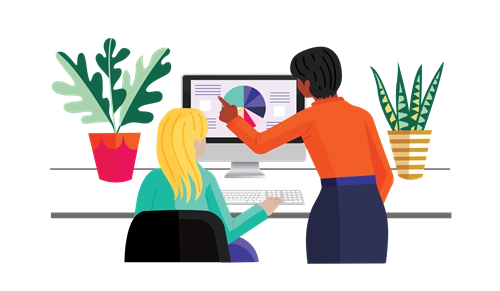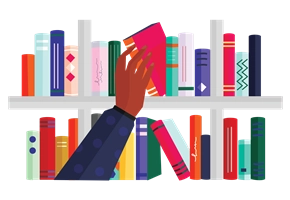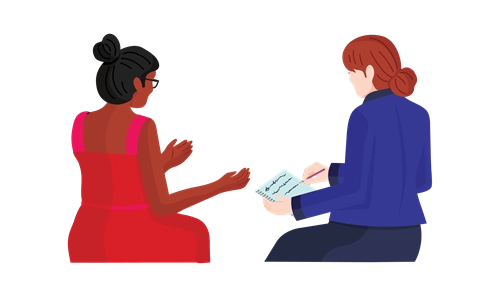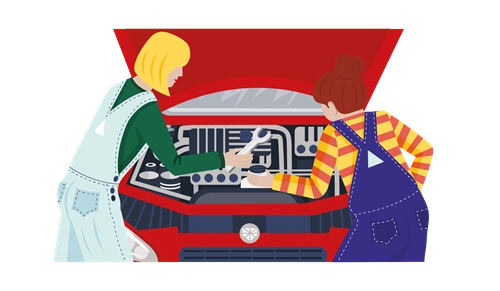Alice and Peta provided valuable insight into the current state of space research and education in Australia, with both presenters especially eager to expose more young girls to the worlds of space and STEM.
As we prepare to enter World Space Week 2022 on 4–10 October, we are sharing the resources our presenters recommend, to help you get involved in all that space education has to offer. Click here to view the webinar.
Useful resources and events at the Australian Space Discovery Centre
Alice Fairey noted that the work the Australian Space Discovery Centre (ASDC) do is very much future-focused.
‘Our purpose is to inspire the community and help build the next generation of the space workforce. We do this in part by showing what’s out there and showing off the ingenuity and creativity of Australians and the opportunities in space for young Australians thinking about what they might study and do next,’ she said.
Alice shared several key priority areas the ASDC focuses on that teachers can make use of to explore space in their classrooms. The first is through earth observation.
Earth observation involves looking ‘back towards the earth from space using any part of the electromagnetic spectrum. These are the beautiful satellite images that you often see. They are gorgeous, quite artistic, but they’re also very much packed with data,’ Alice noted.
The ASDC offers a creative design-thinking workshop called Operation: Eyes on Earth. This workshop has been developed for students in years 7 to 12, and has kids start to plan an Earth Observation mission, look at the surface temperature of Australia, and consider the challenges in doing so. Alice said the aim is to bring this course online for teachers to use with students in classrooms. In the meantime, you can explore EO Browser — which includes real data from NASA and the European Space Agency as images — with your students.
Alice also suggested space situational awareness as an area to explore in the classroom.
‘There are tens of thousands of objects orbiting the earth at the moment, and thousands of active satellites, which means that we've got to have some sort of space traffic management going on and some awareness and planning around working well with all of the objects that are occupying space.’
The ASDC has their own Mission Control Theatrette in their South Australian office, where students can watch the responsive space control operators in action as they monitor satellites and solar weather activity, collect data, and control client satellites. If you’re not in SA, you can still access some of the tools they use, including Saber Astronautic’s TAROT program, which is a register of when and where everything is.
The ASDC is offering several events to help your young engineers and scientists celebrate World Space Week this year. On 9 October, they are hosting a panel discussion on Australis OSCAR 5, talking about the first student-built satellite to be launched. Other events include sessions exploring our solar system and how we know what we know about it. Alice noted these sessions are well-suited to upper primary and lower high school students. The sessions are available via Microsoft Teams webinars and are open for anyone across Australia to join.
Victorian Space Science Education Centre programs to get students excited about space
Peta Kenny of the Victorian Space Science Education Centre (VSSEC) shed light on several programs available to teachers and students in Victoria.
She explained that the VSSEC ‘aims to engage and inspire students in scientific literacy and learning, encouraging them to participate actively in STEM subjects, and leaning towards a STEM-enriched life. It also allows teachers to use space in the teaching of science by providing resources and activities.’
The VSSEC delivers its programs on-site, off-site and online, all of which are designed by on-site teaching staff and STEM professionals. The centre also visits schools, particularly ones in remote areas, to offer guidance, and runs several outreach programs in different scientific disciplines, all available on vssec.vic.edu.au.
Their most popular program is Mission to Mars for years 8–10, where students play the role of scientists, astronauts and mission controllers, collecting real-time data and solving problems.
Peta stressed that the VSSEC focuses on progressive science education and problem-based learning. She noted that it’s important that students get a broad representation of STEM careers, both inside the classroom and with experience in industry settings, so they can see the breadth of work that they could be doing.
‘We allow students to practise some of the scientific skills that they've learned in the classroom and apply them to some real world or industries.’
How will you celebrate World Space Week?
As we enter World Space Week 2022, now is the perfect time to explore the programs, learning resources and exciting opportunities available for young women interested in a space industry career. Inspire the girls in your classes to follow their dreams of a career in space!










